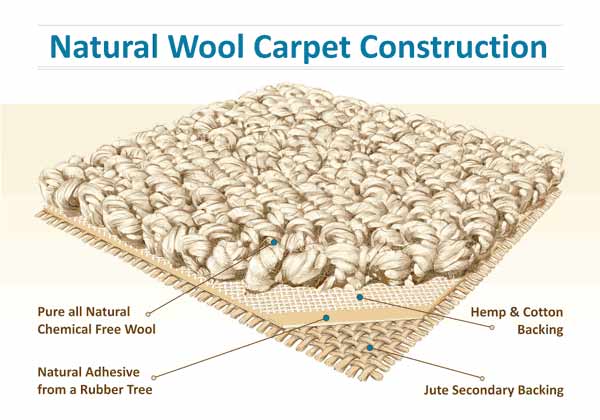
best environmental carpets for your home
 Searching for the best environmental carpet options is important to make your home as environmentally friendly and safe as possible. We at Gast Home love the feel of carpet on our feet in our bedrooms, so while there are many chemicals and industrial materials used in the production of carpets, it is worth searching for the right materials. It is important to pick the right carpet to impact your indoor air quality and health. Start by looking for carpets that have zero or low VOC emission, sustainable materials, and are ecologically friendly. But as always, there is no need to sacrifice design style.
Searching for the best environmental carpet options is important to make your home as environmentally friendly and safe as possible. We at Gast Home love the feel of carpet on our feet in our bedrooms, so while there are many chemicals and industrial materials used in the production of carpets, it is worth searching for the right materials. It is important to pick the right carpet to impact your indoor air quality and health. Start by looking for carpets that have zero or low VOC emission, sustainable materials, and are ecologically friendly. But as always, there is no need to sacrifice design style.
voc
Volitile Organic Compounds (VOCs) are compounds that easily become vapors or gases, and may cause an allergic reaction or nausea. There are many carpets available now that provide low VOC emission.
low voc carpets
non-toxic adhesives and carpet padding
Adhesives are often the main reason for VOC emissions. It is crucial to select really low VOC non-solvent adhesives.
Wall to wall carpet also requires a lot of padding, which together with the adhesive leads to the carpet becoming a reservoir of VOCs, bacteria, allergens, dust, mites, and other chemical toxins. Sometimes there is VOC content in the carpet’s adhesive backing. Vacuuming can keep the carpet clean, but it can’t remove emissions that are bound to the carpet. You need to simply use carpets in your home with eco-friendly adhesives and padding.

One option is carpet made from natural materials, and low-toxic adhesive binding to the secondary backing. The example above shows a secondary backing, where the primary backing of hemp and cotton is attached to a secondary jute backing with a natural rubber adhesive. Styrene-butadiene rubber must be avoided, as some have the same toxicity as formaldehyde.
Wool, cord, and felt are non-toxic options for carpet padding.
natural materials
Natural materials for carpet include:
- Wool
- Sisal
- Cotton
- Jute
environmental impact of buying synthetic carpet
The Carpet Recycling Committee says 1.8 million tons of carpets are sent to landfills each year. Due to increasing landfill costs and increasing regulations, some carpet manufacturers are improving the environmental impact of their operations. Some manufacturers are refurbishing used carpet to make new products, such as carpet fiber, carpet backing, and other flooring materials.
Companies that traditionally sold nylon face fiber are now offering carpet with post-industrial or post-consumer content. Some companies are offering backing made from 100% reclaimed carpet. Most used carpet can be recycled into new products, however it is not always easy. Carpet is often contaminated and hard to collect and process.
Reclaiming face fibers is difficult because most lines of carpet have custom formulations, and identifying the components of used carpet is not easy. Most carpets in the U.S. are made of synthetic materials: nylon 6, nylon 6.6, polyester, polypropylene (PP) face fibers. Most backings are a sandwich of poly-vinyl, or polypropylene fabric and latex. Nylon, polyester, and plastics are made from petroleum, a nonrenewable resource. Therefore the most sustainable option when purchasing synthetic carpets may be: a nylon face fiber with 100% recycled content backing. Other options include:
- Face fiber from some recycled post-industrial or post-consumer content
- 100% recycled PET polyester (i.e. soda bottles)
- Carpet padding from recycled and natural materials
- 100% recycled content backing
Recycled nylon comes from post-industrial fiber (edge trim from finishing lines and waste from yarn mills) vs. post-consumer fiber (carpet that has served its useful life). Some people even prefer the appearance and durability of nylon over polyester. DuPont and Shaw are even working to separate and convert used nylon fiber into new carpet fiber and backing, so that post-consumer fiber is also an option.
other suggestions for carpet sustainability
- Check to make sure the carpet has been tested by the Carpet and Rug Institute’s Indoor Air Quality testing program, which will include a low-emissions label with a small greenhouse icon. SCS Global Services also offers a certification.
- Floor coverings other than carpet make a good environmentally friendly option.
- Use carpet tiles vs. rolls so you can spot replace, leading to a longer overall life
- Always use a non-VOC carpet cleaner.
- Recycle your old carpet so it doesn’t end up in the landfill

